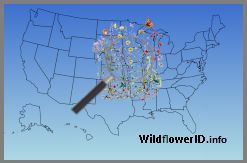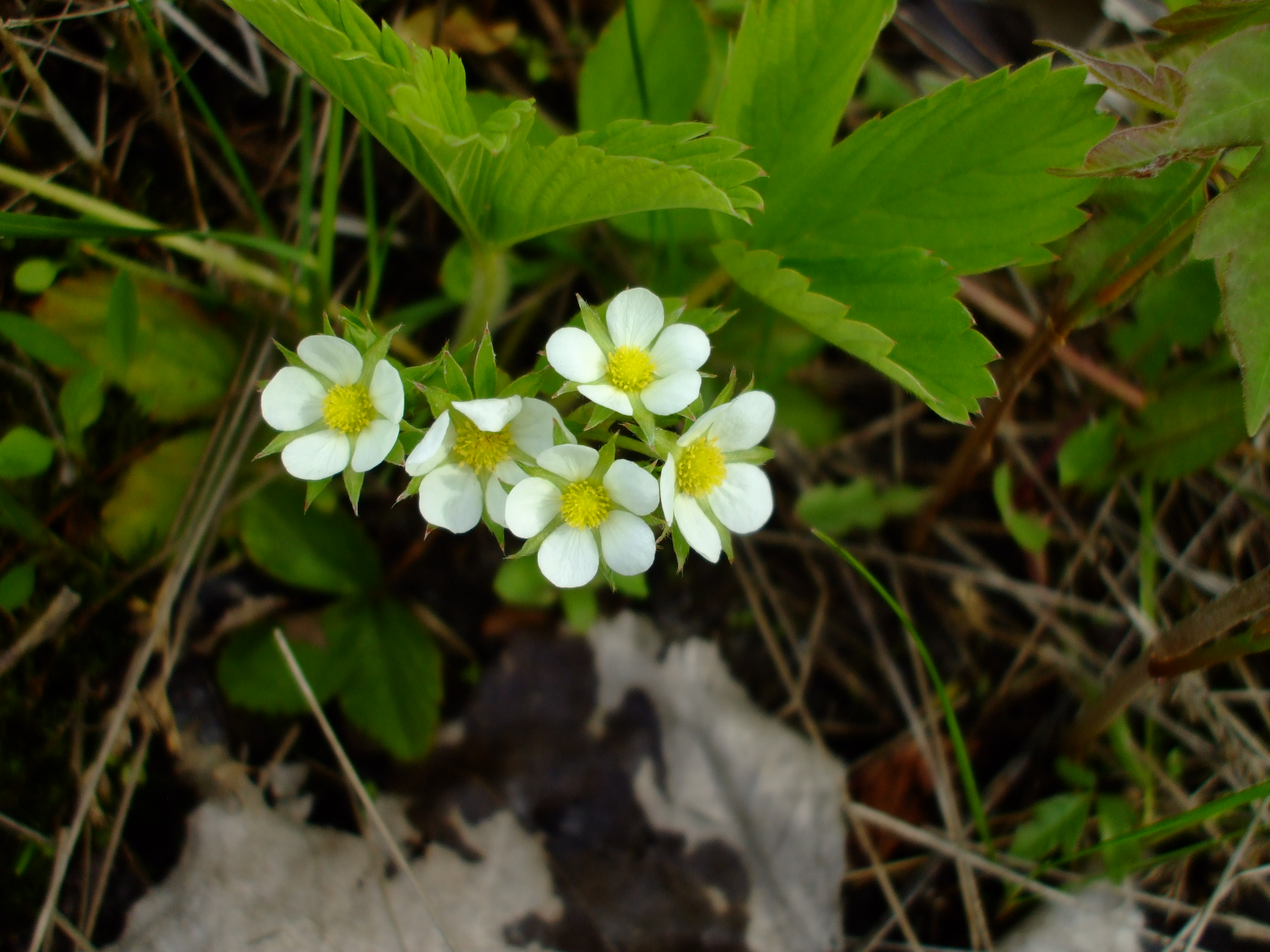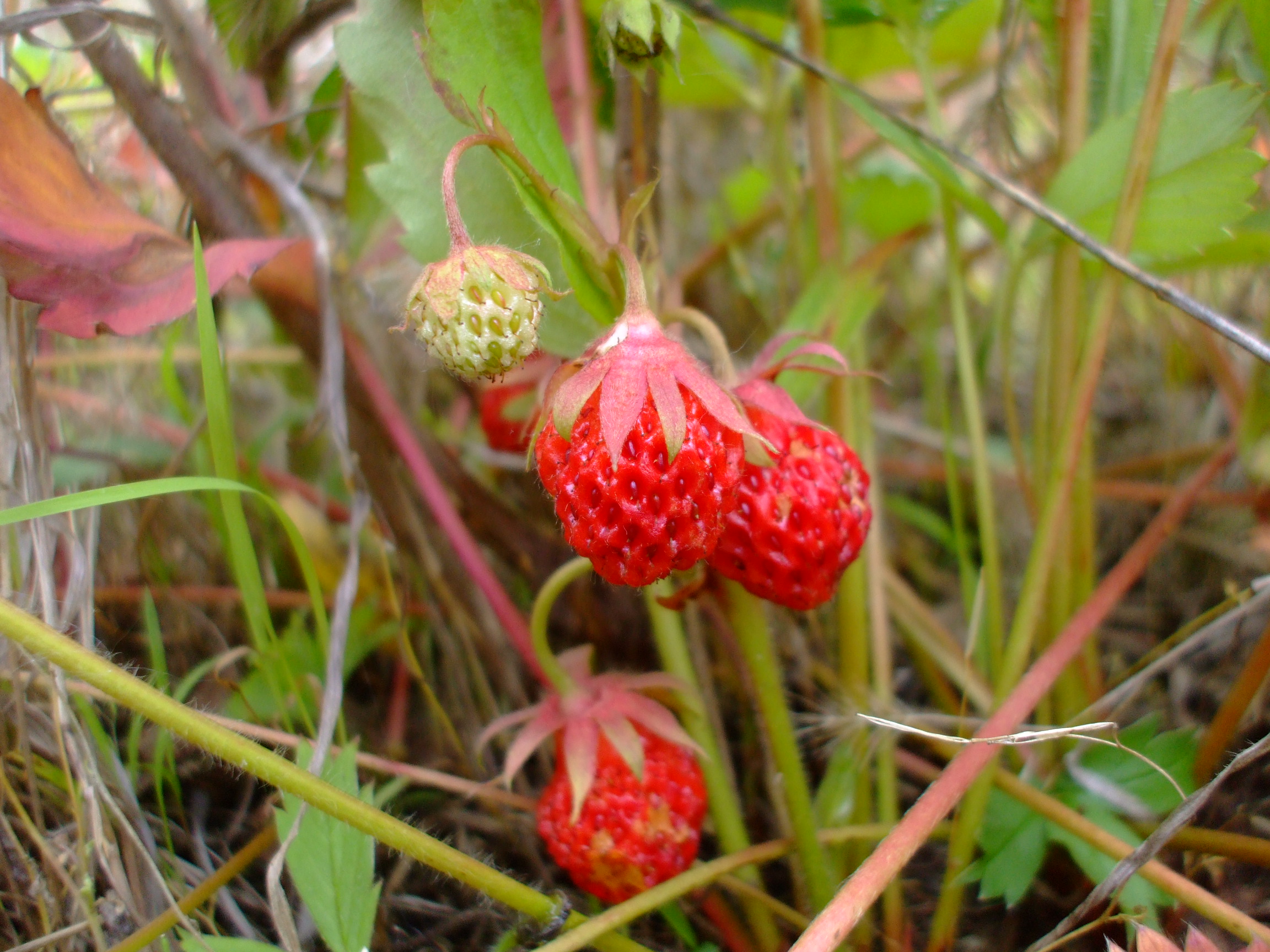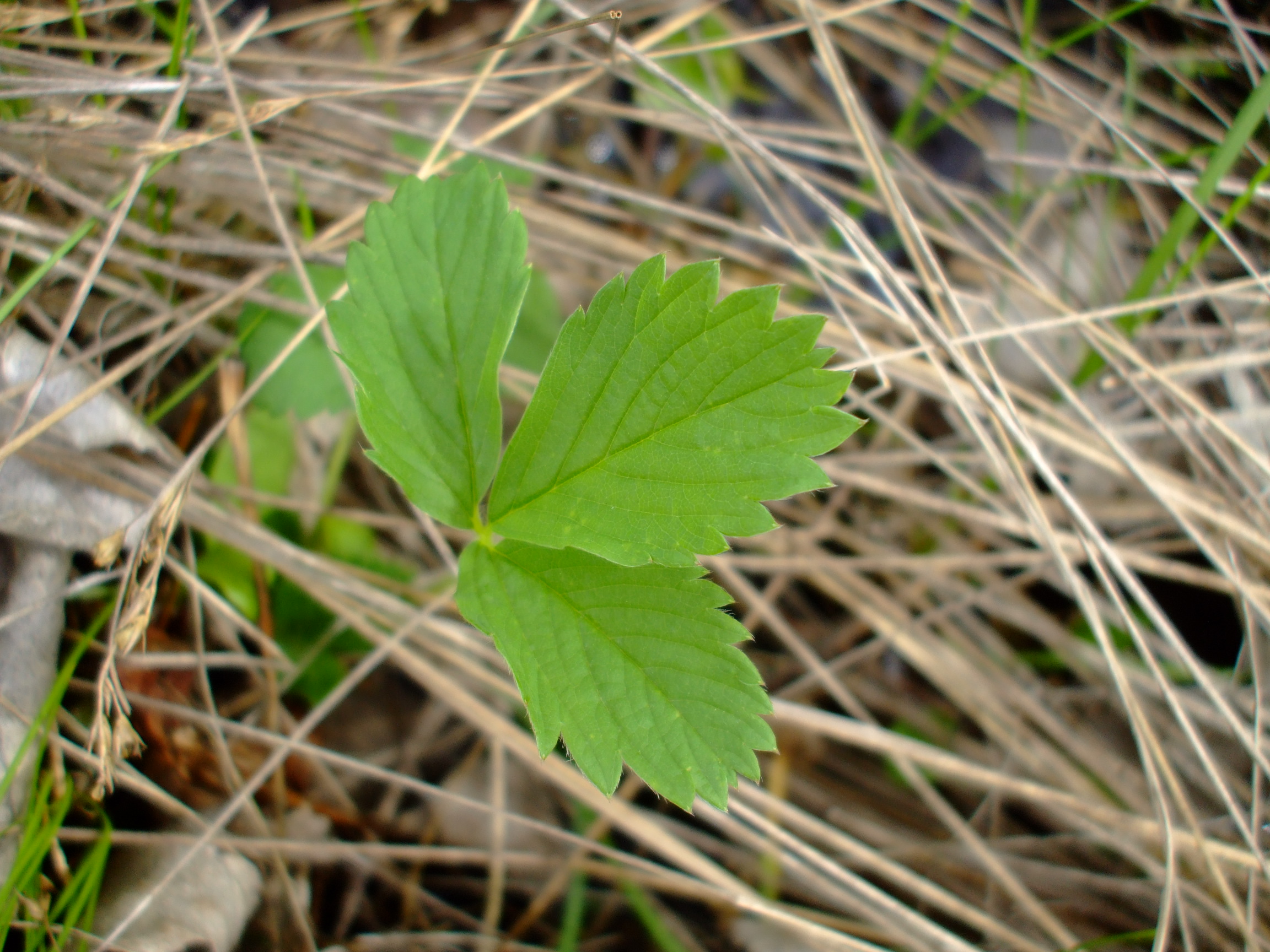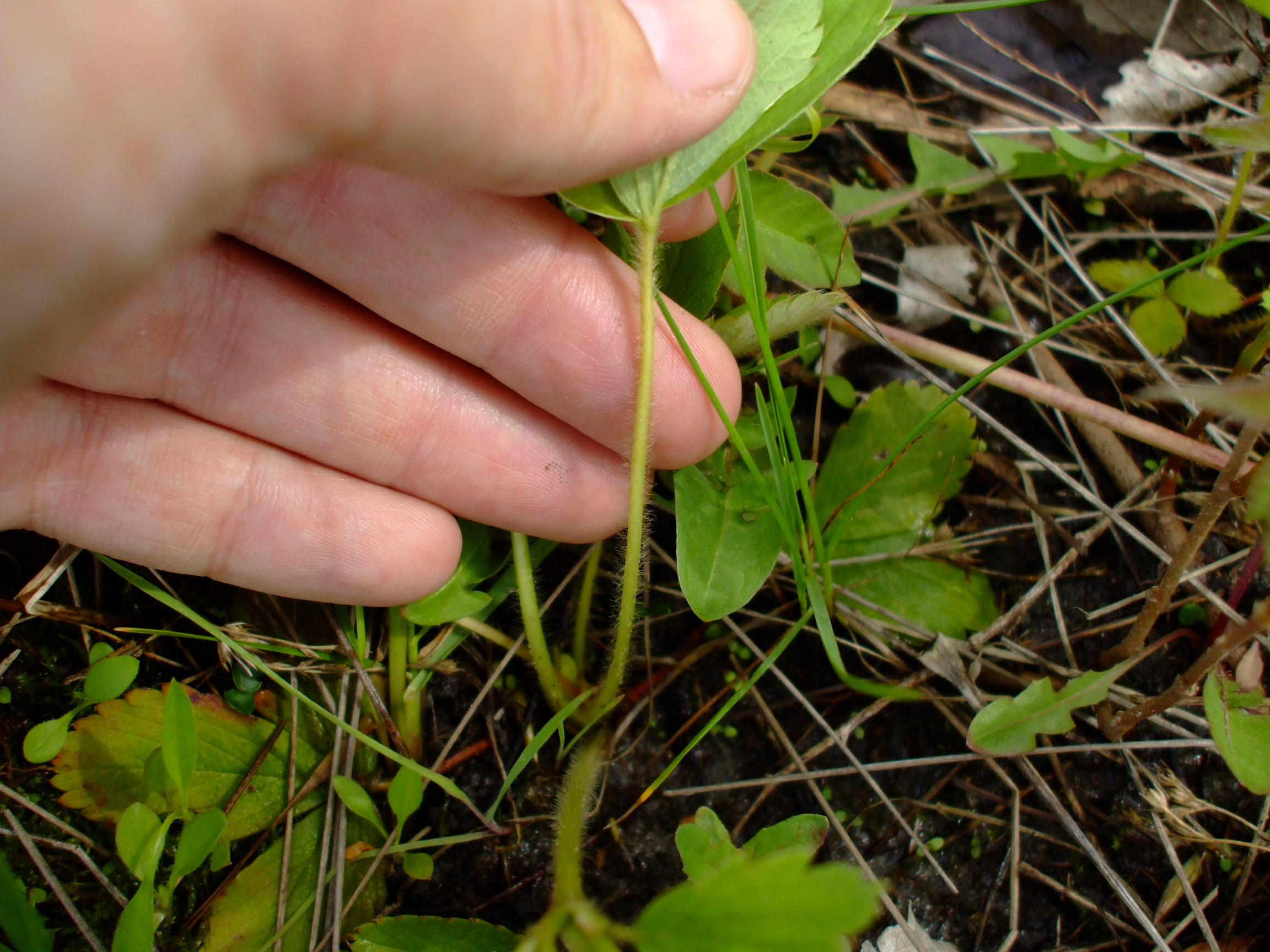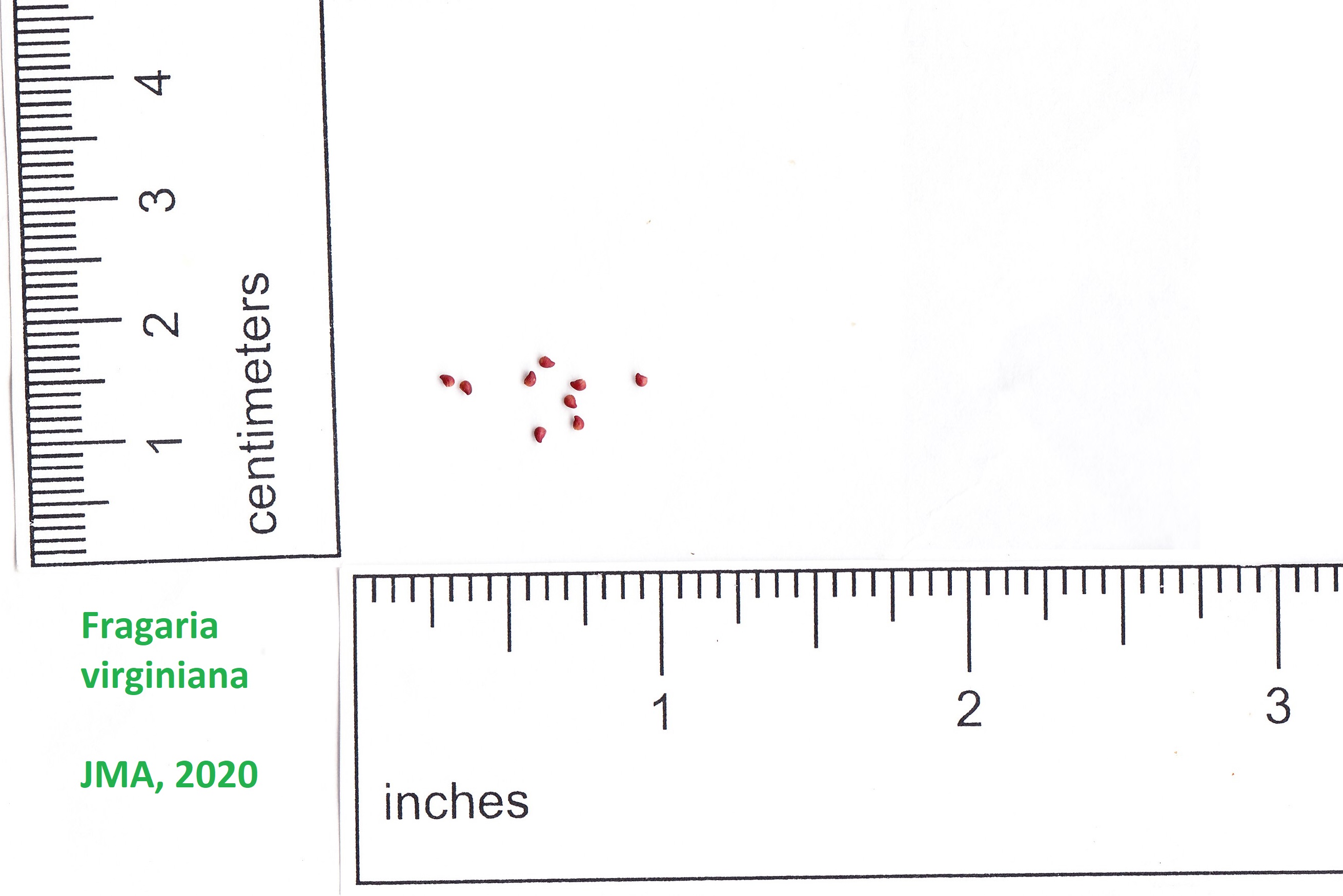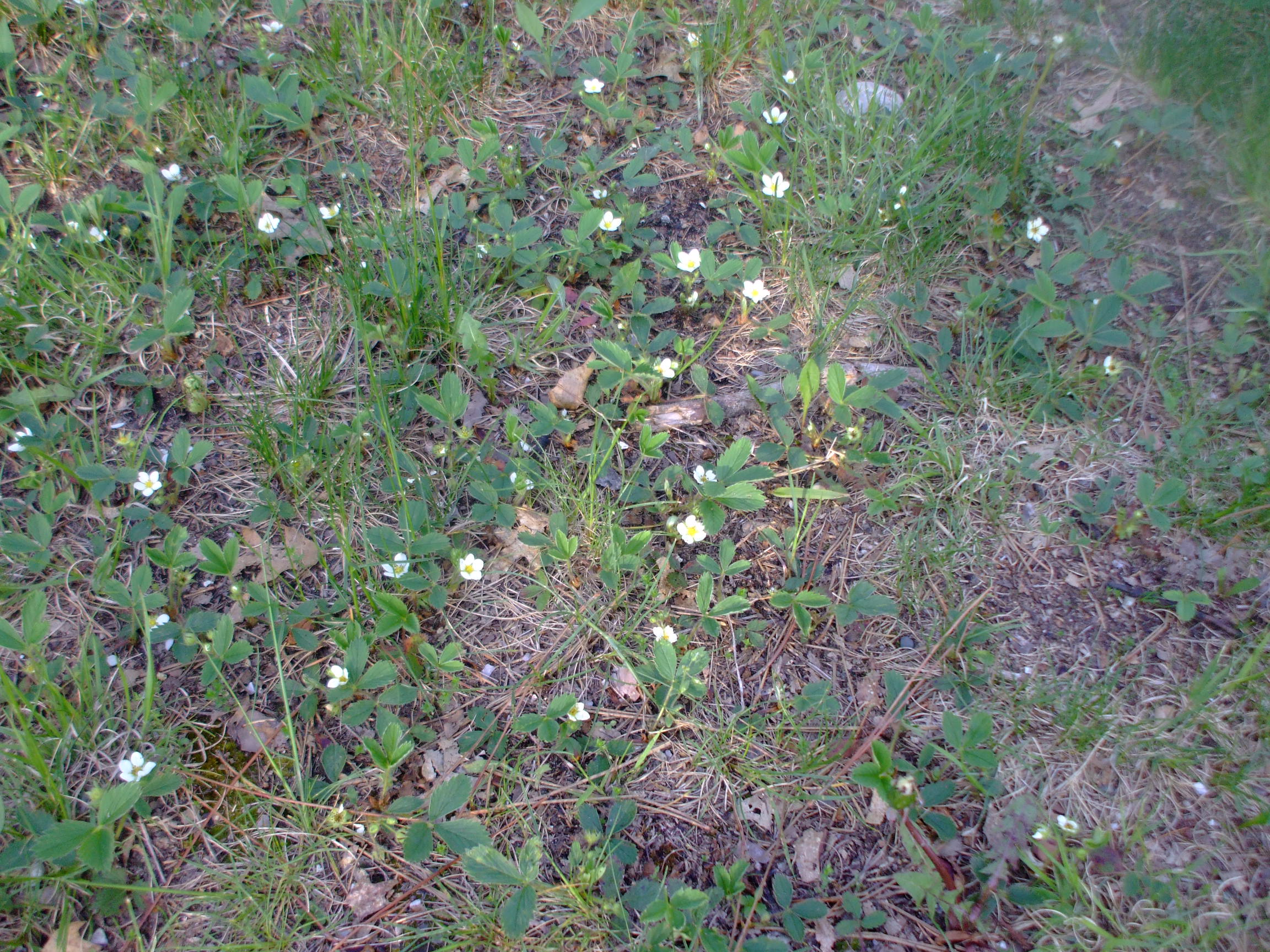Fragaria virginiana
(Wild Strawberry)
Other pictures of this plant:
Facts About this Plant:
- Common Names: Wild Strawberry, Virginia Strawberry, Common Strawberry, Mountain Strawberry
- Synonyms: Fragaria australis, Fragaria canadensis
- Lifespan: Perennial
- Zones: 3 - 9
- Type: Forb
- Bloom Time: April - June
- Status: Native
Fragaria virginiana, or Wild Strawberry, is native to the entire continental United States. It is a perennial plant that sprawls outward from itself, creating new offshoots by runners. It grows in dry to moist areas, in many habitats, including open woods, clearings, prairies, openings, roadsides, yards, woodland edges and other open ground. It blooms in early to mid spring with white flowers.
Our feature species, Fragaria virginiana, is the most common species in the US. There are two others, Fragaria chiloensis, and Fragaria vesca, with the former being native only to the West coast states, and Fragaria vesca is also found in a wide swath of the US. Fragaria virginiana and Fragaria vesca are very similar, but two things in particular are usually helpful in telling them apart. The leaves of Fragaria virginiana have leaf tips that do not extend past the adjacent two serrations on the leaves, usually being well below them, but sometimes just even with them. However, in Fragaria vesca, the leaf tip extends out well beyond the adjacent serrations to be an actual "tip". In addition, the look of the leaves is different in many cases, though not alway reliably so. Fragaria virginiana usually has a hairy appearance to it, sometimes even whitish because of the small hairs. Fragaria vesca on the other hand does not seem to have the hairiness, and it also has very prominent folds in the leaves that look like a piece of paper that has been folded into a fan and then let out. Finally, the fruits of the two species vary. Fragaria virginiana has seeds that are noticeable indented into the fruit, while Fragaria vesca has seeds that are noticeably bulging from the sides of the fruit. See the image below for comparisons.

Back to The Plants.
Back to A-Z Listing.
